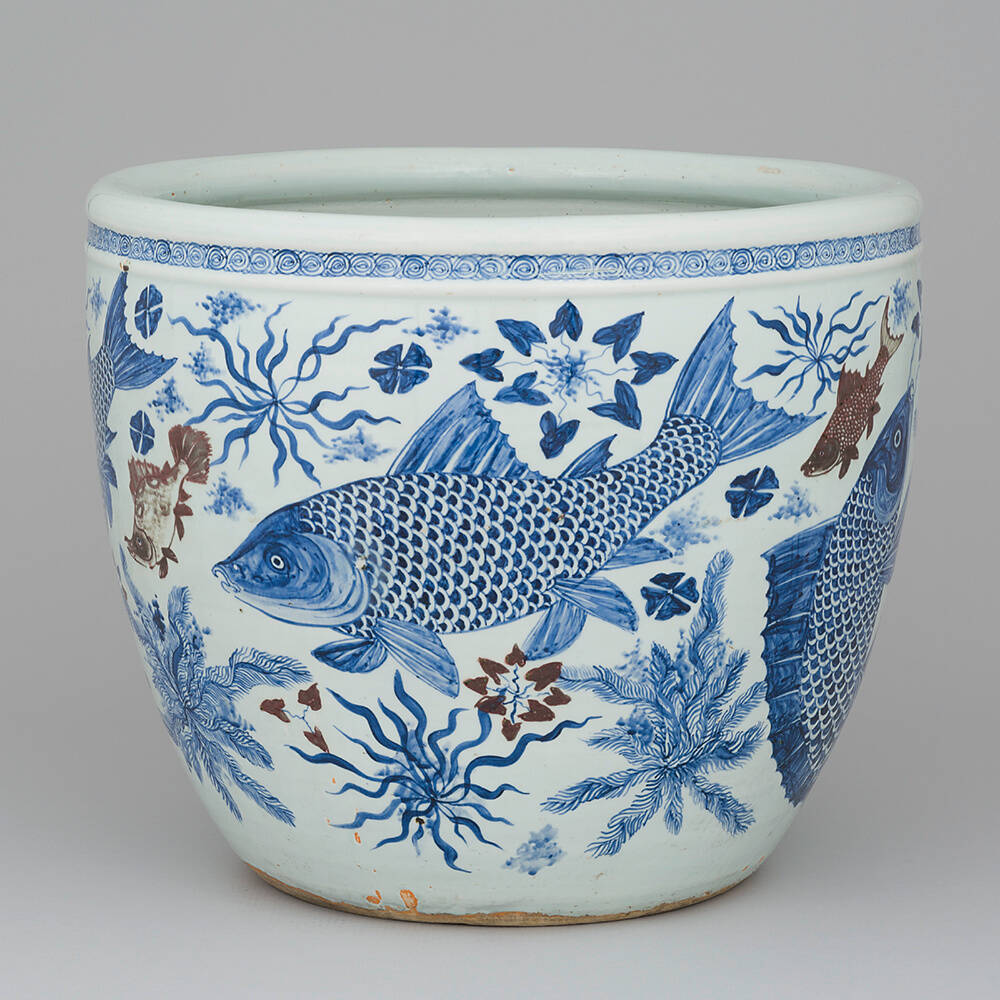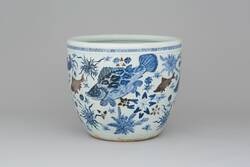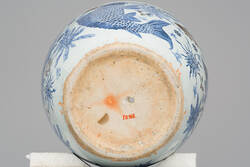These basins are decorated with various types of fish and crustaceans swimming between aquatic plants. The cobalt blue and copper red underglaze painting is vibrant yet finely nuanced. In China, such basins were used to keep ornamental fish.
In Chinese culture, fish play an important role, symbolising good fortune and abundance.
When these basins were made in around 1700 in the era of Emperor Kangxi, China already had a centuries-old tradition of porcelain production. Dutch merchants were especially active in shipping Chinese porcelain to Europe.
Further Media




Augustus the Strong, Elector of Saxony, had his beloved sweet orange trees planted in these large basins. In some basins, you can still see the holes drilled into the bases in Dresden to allow them to drain.
The porcelain and the sweet, golden fruit both came from China. The sweet orange’s land of origin is evident in its German name Apfelsine – literally an ‘apple from China’. Although citrus fruit were already cultivated in China over 4000 years ago, the first lemons, bitter and sweet oranges only arrived in Europe through Portuguese merchants in the sixteenth century. With the favourable climate around the Mediterranean Sea, the fruit was soon grown there too. But north of the Alps it was a different story. Here, it was simply too cold for citrus trees – and so they became a special luxury item.
The royal courts in northern Europe had to construct orangeries to cultivate the trees. In the Zwinger, the long galleries with their large windows were once used in winter to protect the trees from frost.
In summer, the great moment came when Augustus had both the Zwinger courtyard and the Japanese Palace garden decorated with orange trees – a tradition revived in the Zwinger today. Incidentally, rather than fish basins as ornamental tubs signalling a lack of respect for the porcelain, this in fact highlighted the exotic value of the citrus trees. Moreover, this practice was followed even in the knowledge that the Chinese porcelain would be exposed to the wind and weather. From our collection inventories, we know a piece was sometimes damaged when it fell off a low wall.
- Location & Dating
- China, Jingdezhen, Qing dynasty (1644-1911), Kangxi period (1662-1722), c. 1700
- Material & Technique
- Porcelain, painting: underglaze cobalt blue and copper red
- Dimenions
- H. 48,7 cm, D. 58,8 cm, D. Fuß: 34,0 cm
- Museum
- Porzellansammlung
- Inventory number
- PO 968